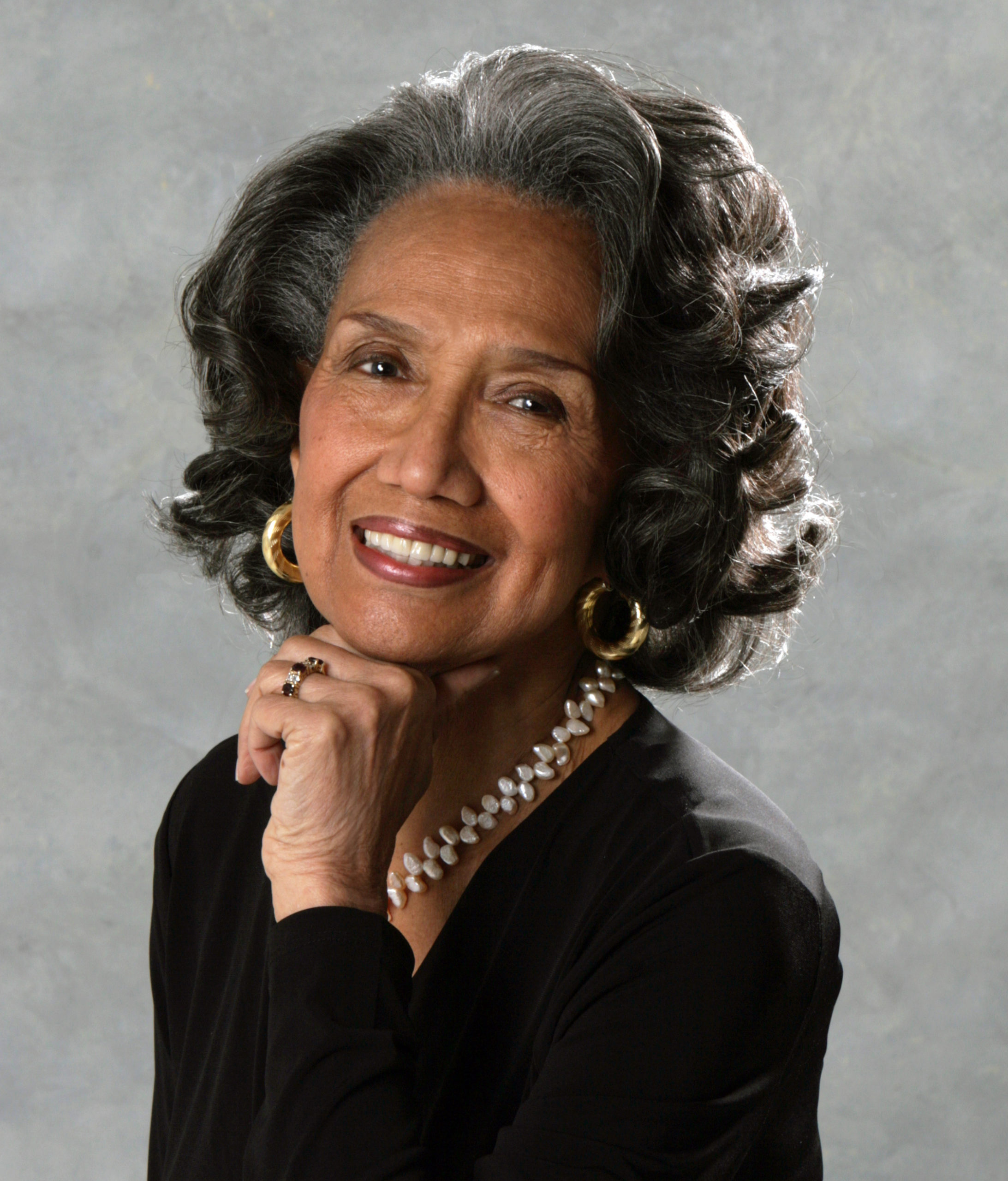
Dance legend Joan Myers Brown, Philadelphia-born and -bred, founded the Philadelphia School of Dance Arts in 1960 to train Black dancers, who at the time had little opportunity to train in dance (particularly ballet) at segregated dance studios. Ten years later she founded the now renowned modern dance company PHILADANCO for similar reasons. Myers Brown has since also founded the International Association of Blacks in Dance and the International Conference of Black Dance Companies. It’s hard to believe there are still firsts in the pioneering nonagenarian’s life, but she recently had a number of scholarships created in her honor by Francisco Gella at his school, Francisco Gella Dance Works (FGDW).
The Francisco Gella Dance Works Equity Scholarship Program, which awards more than $50,000 to young dancers, will now officially be known as The Joan Myers Brown Equity Scholarship Fund. In addition, FGDW also announced the launch of two annual full scholarships to any of its programs. These will be named the Joan Myers Brown Emergence Scholarships and will be awarded to pre-professional Black dancers at the annual International Association of Blacks in Dance auditions held each January.
Gella, a former PHILADANCO member commented in a press release in Broadway World, “My artistic development and the life lessons I learned while dancing with the company, and the mentorship of Joan Myers Brown, has shaped me in so many ways and continues to positively influence me personally and professionally to this day. The best way I can think of to pay that back is to pay it forward to future generations of artists and leaders by furthering the continued legacy of this remarkable woman.”
Dance Teacher spoke with Brown about the state of the dance field for Black dancers, and her thoughts on the scholarships that are named and created in her honor.
Who were some of your biggest influences personally and professionally? And in what way did each of them influence you?
My first influence was Katherine Dunham. I had never seen anyone Black performing before, so when I saw Katherine and her company for the first time, I was just mesmerized and felt that it was something that I could do. We were just dancing in the city and with our neighborhood dance company, so to see that, you know we’re talking 1947, was so important.
Antony Tudor was the one who really nurtured me and pushed me on my way. When he came to Philadelphia in the 1950s, he taught ballet classes as a guest teacher. It was my girlfriend’s mother and grandmother’s dance school. I was invited to take class and was the only Black person there. But Antony treated me like I wasn’t Black, and just like anybody else. He also told me that if I really wanted to pursue dance, I had to leave Philadelphia and go to New York. Although I never moved to New York, I commuted back and forth, because, ironically, I won a scholarship to the Katherine Dunham School!
What does it mean to you to now have scholarships created in your name?
These are the first scholarships in my name outside of our own PHILADANCO scholarships. They were created by Francisco Gella, a former member of my company, PHILADANCO. When Francisco left the company, he was irate, because he was not used to receiving the tough love I showed him and all the other dancers. Once he got out on his own, he discovered that everything I taught him, and all that he had to go through by being a company member, had actually made an impact on him. And so to have him create these scholarships in my name was a huge compliment to me and testament to the fact that what I taught Francisco was not only valid but valuable.
What do you hope young dancers, especially young Black dancers, gain from these new scholarships?
If they’re serious about dance, I think the scholarships are great opportunity to have their work supported. Most students today are into competitions and winning trophies, but it’s so important to learn the techniques and the skills. So to have this scholarship for someone who is serious about having a well-rounded career in dance is definitely promising.
Looking back, how do you feel about having carved out an artistic haven for Black dance artists, and to have created and shared their visions through your example, and through your company and your school?
I started school 10 years before I started the company. When I began, my objective was to produce dancers that would be qualified to move into the spaces where they were not seen because they were Black. So when I started my company, it was because those opportunities still were not available. Even today, Pennsylvania Ballet [now known as Philadelphia Ballet] has only one Black dancer. Fifty years later, they still have just one. I think the opportunity for our young Black dancers has to be available in training. Often people claim that we don’t have enough or aren’t good enough, especially in ballet. I keep trying to push my dancers in that direction. But it’s very hard, because young dancers don’t go see ballet that often, and so it’s really hard to encourage them to go after opportunities in the field. They are into TikTok and Facebook, and all that shows is the boogie-down. This is even the case with students that come to my school and take ballet class. I ask them, “How many of you have ever seen ballet?” A lot of them don’t. So I say, “Well, pick up your phone and look at ballet. Why are you taking ballet if you haven’t seen ballet?” It’s still a challenge with our youngsters, but if any of them get hooked and want to do ballet, I want them to have the opportunity to do so.
So you’re happy about being able to expose them to ballet in a way that they might not have been exposed to otherwise?
Well not just ballet, but dance itself. Because even in the public schools that have dance programs that teach Graham or Horton, the students still don’t have the inclination to learn the craft. And I think it’s important that we let them know it’s like learning how to drive. You’ve got to know all the mechanics, you can’t just jump in and go. You have to have a solid foundation. Good training and exposure is lacking in our community. So when students, especially Black students, get involved with ballet or dance and go to an audition, I have to remind them there are going to be 500 white girls, so you’re going to have to be just as good or better to get the those opportunities. And I want to ensure that they have the opportunities if they’re qualified.
What’s your advice for dance educators?
Teachers have to be qualified. They have to know more and make sure that their training is adequate. There are a lot of people teaching dance that shouldn’t be teaching dance because they have not studied it enough themselves. Yet they still do it to make a living.
I have dancers who are in college here in Philadelphia, and they say that the only place they dance is at PHILADANCO because all they do [in college] is a lot of improv, deep breathing, etc., and they haven’t yet learned the technique. There are so many different techniques, and they should be fluent in all of them, right from Cunningham to Graham to Dunham. And not just ballet, but they still need that ballet foundation. We all know that has not changed. Maybe the teacher can write a dissertation about the history of dance, but what if they can’t teach dance, or have never danced themselves? That’s the problem.
How does someone know when they’re ready to teach?
There are many programs out there that teach you how to teach. If you’re under guidance or mentorship of someone who is maintaining a program, make sure that they’re teachers or you go observe other people teaching. There’s a difference between giving a class and teaching a class, because some of the dancers will say “Oh, that class was so fabulous,” and I would say “Well, what have you learned?” You have to learn something in a dance class.





